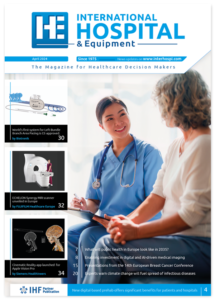Breathing difficulty predicts sixfold mortality risk in hospital patients
A simple nursing assessment of patient-reported breathlessness during hospitalisation can identify those at dramatically elevated risk of death, with post-admission dyspnoea linked to a sixfold increase in mortality compared with patients reporting no breathing difficulty, according to research published in ERJ Open Research.
Study tracks dyspnoea throughout hospital stay
Researchers at Beth Israel Deaconess Medical Center conducted a retrospective cohort study of 9,785 consecutive hospital admissions between March 2014 and September 2016. The team analysed nursing assessments in which patients rated their breathing discomfort on a 0-to-10 scale at least once per shift throughout their hospital stay.
The investigation revealed that 18% of patients reported dyspnoea upon admission, whilst an additional 10% developed breathing difficulty after admission. Most strikingly, patients who developed dyspnoea after admission faced a 5.9% mortality rate during hospitalisation, compared with just 1% amongst those who never reported breathing difficulty.
“Dyspnoea is easy to measure, prevalent, distressing, and predictive of subsequent adverse outcomes,” the authors wrote. “Ongoing periodic dyspnoea assessment is needed both for adequate symptom management and to predict risk.”
Mortality risk extends beyond discharge
The predictive power of patient-reported dyspnoea extended well beyond the immediate hospital stay. Patients who reported breathing difficulty at any point during hospitalisation demonstrated 50% greater mortality during the following two years compared with those reporting no dyspnoea. This risk intensified for patients still experiencing breathlessness upon discharge, who faced a 2.6-fold increased hazard of death within two years.
The study also revealed a quantitative relationship between dyspnoea severity and outcomes. Patients rating their worst breathlessness above 3 out of 10 during hospitalisation carried six times the risk of in-hospital death compared with those reporting no dyspnoea, and twice the risk compared with those experiencing milder symptoms.
“Documentation of patient-reported dyspnoea opens the possibility of individualised diagnostic and therapeutic actions,” the researchers noted in their published findings.
Pain shows markedly different pattern
Whilst dyspnoea demonstrated robust mortality prediction, patient-reported pain told a different story. Although nearly three times as common as dyspnoea, with approximately three-quarters of patients reporting pain at some point during hospitalisation, pain showed no significant association with mortality either during admission or in the two years following discharge.
The researchers found that pain was associated with several adverse outcomes including intensive care transfer, rapid response team activation, and extended length of stay. However, its predictive value for mortality remained statistically insignificant even after adjusting for multiple comparisons.
Implementation requires minimal resources
The practical implications of the research are particularly noteworthy given the minimal burden of dyspnoea assessment. Nurses reported that documenting patient breathlessness required less than one minute per patient and did not increase their overall workload. The assessment takes place whilst patients are ordinarily seated or recumbent, using a simple numerical rating scale anchored by “unbearable” at 10 and featuring intermediate descriptors of mild, moderate, and severe positioned according to validated word scaling data.
Physiological integration versus localised injury
The authors proposed that dyspnoea’s superior predictive power stems from its integration of information from multiple interoceptors monitoring cardiopulmonary gas exchange mechanisms throughout the body. This richness of physiological information compensates for any variability in patient perception and reporting.
In contrast, pain typically signals localised injury to skin, muscle, or bone rather than systemic threats to vital organ systems. The study’s pain data did not distinguish between somatic and visceral pain, potentially masking relationships that might emerge with more granular categorisation.
Clinical applications and future directions
The findings suggest several potential clinical applications, including using dyspnoea explicitly as a trigger for rapid response teams, as a criterion for enhanced monitoring or telemetry, and as an indicator for discharge planning and goals-of-care discussions. The data particularly highlight concern for patients discharged whilst still reporting breathlessness, who experienced much of their elevated mortality risk within the first 150 days post-discharge.
The researchers acknowledged limitations including the single-centre setting and potential inconsistencies in assessment methodology. They suggested that electronic collection with standardised queries might strengthen the associations between dyspnoea and adverse outcomes even further.
Reference
Stevens, J. P., Schwartzstein, R. M., Sheridan, A. R., O’Donnell, C. R., Baker, K. M., & Banzett, R. B. (2025). Patient-reported dyspnoea predicts 6-fold hospital mortality. ERJ Open Research, in press. https://doi.org/10.1183/23120541.00804-2025


